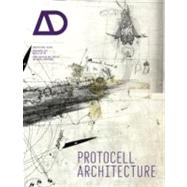
Protocell Architecture
by Spiller, Neil; Armstrong, RachelBuy New
Rent Textbook
Used Textbook
We're Sorry
Sold Out
eTextbook
We're Sorry
Not Available
How Marketplace Works:
- This item is offered by an independent seller and not shipped from our warehouse
- Item details like edition and cover design may differ from our description; see seller's comments before ordering.
- Sellers much confirm and ship within two business days; otherwise, the order will be cancelled and refunded.
- Marketplace purchases cannot be returned to eCampus.com. Contact the seller directly for inquiries; if no response within two days, contact customer service.
- Additional shipping costs apply to Marketplace purchases. Review shipping costs at checkout.
Summary
Author Biography
Rachel Armstrong is a medical doctor, author, AVATAR Researcher and Teaching Fellow at the Bartlett School of Architecture.
Table of Contents
ABOUT THE GUEST-EDITORS (Neil Spiller and Rachel Armstrong).
SPOTLIGHT.
Visual highlights of the issue.
INTRODUCTION.
It's a Brand New Morning (Neil Spiller and Rachel Armstrong).
Structure and the Synthesis of Life (Martin Hanczyc).
Defining New Architectural Design Principles with 'Living' Inorganic Materials (Leroy Cronin).
Cronin pioneers a fundamentally new approach to materials, scaling up from the nanoscale.
Dream a Little Dream (Mark Morris).
An Architectural Chemistry (Omar Khan).
Protocells: The Universal Solvent (Neil Spiller).
How Protocells Can Make 'Stuff' Much More Interesting (Rachel Armstrong).
Soil and Protoplasm: The Hylozoic Ground project (Philip Beesley and Rachel Armstrong).
Authorship at Risk: The Role of the Architect (Dan Slavinsky).
Proto-Design: Architecture's Primordial Soup and the Quest for Units of Synthetic Life (Neri Oxman).
Oxman explores how material properties are a potent intermediary for the built environment.
Back to the Future (Paul Preissner).
Line Array: Protocells as Dynamic Structure IwamotoScott Architecture (Lisa Iwamoto)
AVATAR and the Politics of Protocell Architecture (Nic Clear).
COUNTERPOINT.
Bettering Biology? (Bill Watts).
An electronic version of this book is available through VitalSource.
This book is viewable on PC, Mac, iPhone, iPad, iPod Touch, and most smartphones.
By purchasing, you will be able to view this book online, as well as download it, for the chosen number of days.
Digital License
You are licensing a digital product for a set duration. Durations are set forth in the product description, with "Lifetime" typically meaning five (5) years of online access and permanent download to a supported device. All licenses are non-transferable.
More details can be found here.
A downloadable version of this book is available through the eCampus Reader or compatible Adobe readers.
Applications are available on iOS, Android, PC, Mac, and Windows Mobile platforms.
Please view the compatibility matrix prior to purchase.
